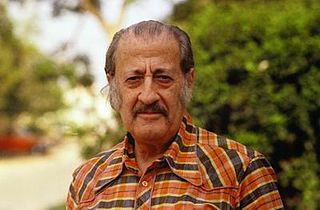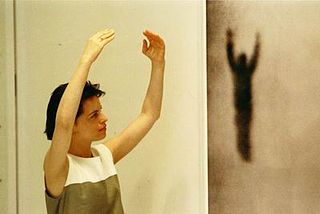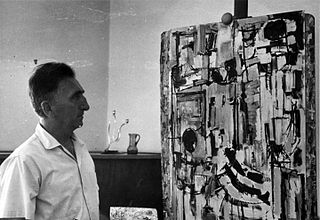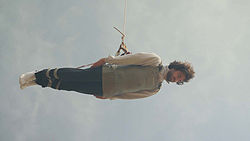
Petah Tikva, also known as Em HaMoshavot, is a city in the Central District of Israel, 10.6 km (6.6 mi) east of Tel Aviv. It was founded in 1878, mainly by Haredi Jews of the Old Yishuv, and became a permanent settlement in 1883 with the financial help of Baron Edmond de Rothschild.

Gideon Gechtman was an Israeli artist and sculptor. His art is most noted for holding a dialogue with death, often in relation with his own biography.
Avi Schwartz is an Israeli painter.

Moshe Castel was an Israeli painter.
Pinhas Golan was an Israeli artist and sculptor. Golan was a Holocaust survivor and his work focused on the subject.

Dor Guez Munayer is a Jerusalemite artist of Christian Palestinian and Tunisian Jewish origin, founder of The Christian Palestinian Archive, and the director of SeaPort Residency.

Ruti Sela, is a video artist.

Michal Rovner, also known as Michal Rovner Hammer, is an Israeli contemporary artist, she is known for her video, photo, and cinema artwork. Rovner is internationally known with exhibitions at major museums, including the Louvre (2011) and the Whitney Museum of American Art (2002).

Israel Zafrir was an Israeli photographer. Born to Solomon Glaser and Regine (Rifke) Baumöhl. Zafrir was one of the founding fathers of modern documentary photography in Israel.
Yeshayau Sheinfeld (Scheinfeld) (1909–1979) was an Israeli painter and industrialist.
Ella Littwitz is an Israeli artist, living and working in Jaffa, Israel. Littwitz is a laureate of the HISK- Higher Institute for Fine Arts in Ghent (BE) in 2015 and received her BFA from Bezalel Academy of Art and Design in 2009.
Tal Shochat is an Israeli photographer.
Yasmeen Godder, is an Israeli choreographer and dancer.
Orna Ben-Ami, is an Israeli sculptor and former journalist.
The Israel Painters and Sculptors Association was established in 1934 and has been associated with many painters and sculptors who worked in Israel. With the establishment of the State of Israel, the name of the association was changed to the "Association of Painters and Sculptors in Israel". In 2002, the name was changed again to "Painters and Sculptors Association " and three independent associations of painters and sculptors were established in Jerusalem, Haifa and Be'er Sheva.

From Language to Language is a 55-minute 2004 Belgian-French-German-Israeli Hebrew-language independent underground experimental documentary art film directed by Nurith Aviv.
Hanna Farah-Kufer Bir'im or Hanna Fuad Farah, is a Palestinian visual artist, builder, and architect. He lives in Tel Aviv-Yafo, and in the village of Bir'im.
Roni Taharlev is an Israeli figurative painter.

Yehiel Krize was an Israeli painter, born in 1908 in Kalisz, Poland. He died in 1968.

Pinchas Abramovich was an Israeli painter during the period of the Yishuv and the following days of the state of Israel. He was one of the founders of the Ofakim Hadashim art group.











